Reviews
In Israel, Artists Engage With East African Immigration and Netanyahu’s Southern Wall
Artists react to the crisis with poignant tributes.
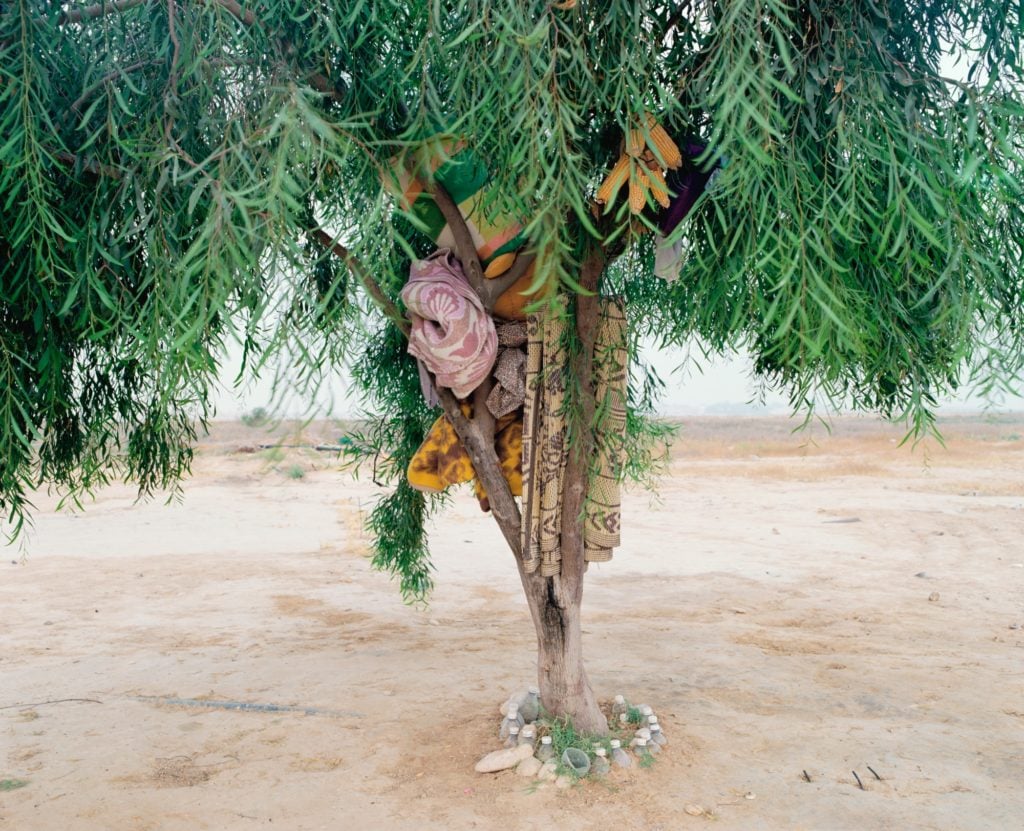
Artists react to the crisis with poignant tributes.

Hili Perlson

When Israeli prime minister Benjamin Netanyahu sent out a tweet praising Trump’s plan to build a wall along the US-Mexico border, he didn’t expect the backlash that would ensue, or Mexico’s no-nonsense reaction. Sent from his personal account, the tweet—which was shared 40,000 times—read “President Trump is right. I built a wall along Israel’s southern border. It stopped all illegal immigration. Great Success. Great idea.”
The “wall” Netanyahu was referring to is a steel fence, replete with cameras and motion detectors, that Israel completed along the border with Egypt in 2013, mainly to keep out migrants and asylum seekers fleeing civil wars and conflicts in east Africa since the 2000s, including Somalis, Sudanese, and Eritreans.
Currently, tens of thousands of refugees and asylum seekers are denied recognition by the Israeli state, and live in legal limbo in communities gathered mostly around the south of Tel Aviv and southern Israel, or detained in a jail-like center. Here are some exhibitions currently on view in Jerusalem and Tel Aviv that engage with the policies of the Israeli state of handling this humanitarian crisis:

Ron Amir, Don’t Move (2015). Courtesy The Israel museum, Jerusalem
1. Ron Amir, “Doing Time in Holot,” at the Israel Museum, Jerusalem
Holot is a detention facility in the Israeli Negev desert, where thousands of Sudanese and Eritrean asylum seekers are held while awaiting their status to be processed. Israel refuses to grant them refugee status, yet it cannot deport them to their native countries as their lives could be at threat. Detainees are thus stuck in a double limbo, legal and physical: though permitted to leave the facility every morning, failing to be counted between 10 p.m. and 6 a.m. could land them at the nearby prison.
Over 3,000 men and women exit the facility into the vast Negev desert each day. Israeli photographer and video artist Rom Amir has documented, over the past couple of years, the traces of lives lived passing time in the arid landscape around Holot. Evidence of temporary, ingenious structures folded up overnight and unpacked again every morning show a system of make-do solutions: A carpet laid under a tree functions as a “café,” a pit in the sand becomes an oven, a rectangle of rocks on the ground marks the area designated as a mosque.
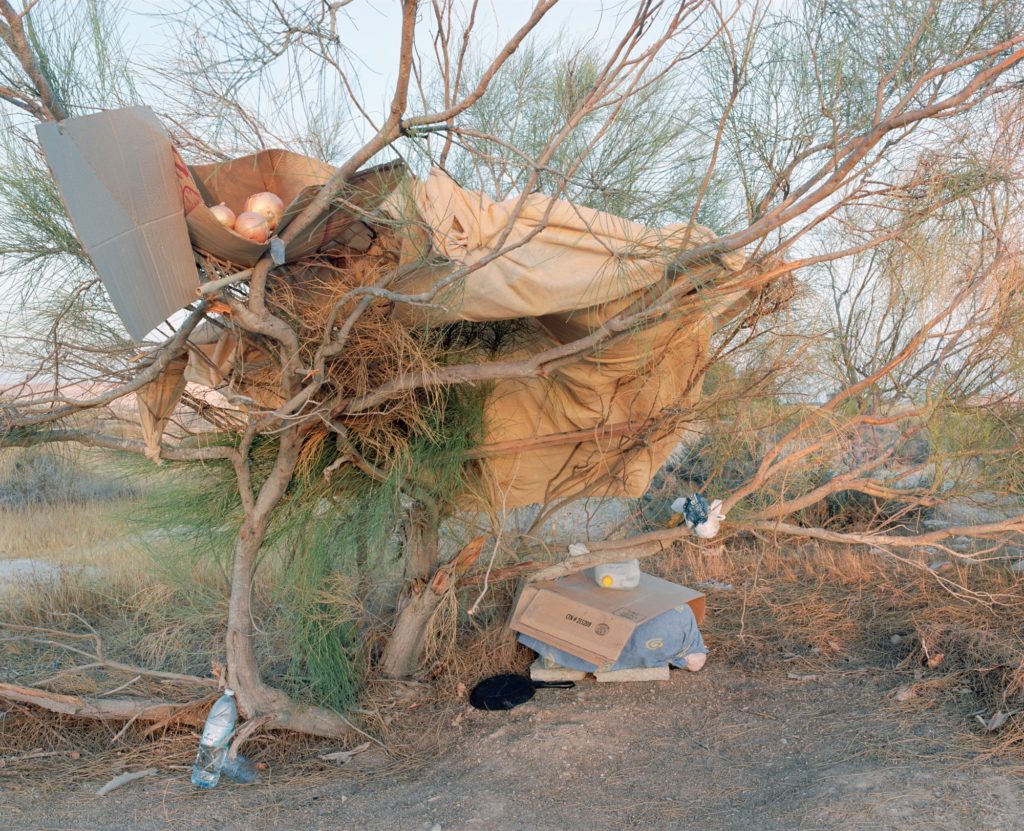
Ron Amir, Kitchen, front view (2015). Courtesy The Israel museum, Jerusalem
An outsider to a community whose social structures he grew to know through his engaged artistic work, Amir is aware of his position of privilege, both as an artist, and a free man. Thus, many of the works speak of a precariousness—of relationships, structures, lives. Not always knowing himself what the seemingly haphazard collection of branches, stones, plastic bottles, and textiles that he encounters serve as, some of the photographs in the exhibition end up highlighting the sculptural qualities of these sites as well as their social ones.
Working with a long-exposure camera, one video placed at the entrance to the exhibition clocks in at nearly 20 minutes. Showing the artist taking a portrait of a group of men, he asks them not to move for the entire duration. Time stretches under the punishing desert sun, but that’s the least of their problems.
“Ron Amir: Doing Time in Holot” is on view at The Israel Museum, Jerusalem from December 22, 2016 – April 22, 2017
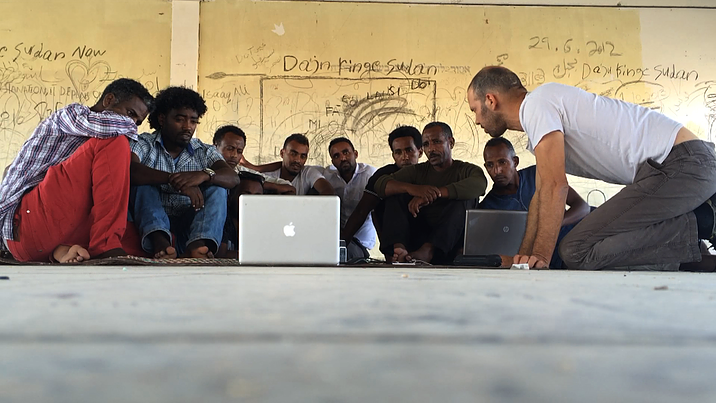
Guy Ben Ner, Still from Escape Artists (2016). Courtesy of the Artist and Sommer Contemporary Art, Tel Aviv
2. Guy Ben Ner, “Escape Artists,” at Sommer Contemporary, Tel Aviv
Israeli artist Guy Ben Ner has been teaching detainees at Holot an introductory course to cinema, and clips from classes from the last two and a half years form the core of his new work, Escape Artists, concurrently on view at Sommer Contemporary in Tel Aviv, and at Pinksummer in Genoa, Italy.
Restricted from filming inside Holot, or holding the classes within its premises, sessions were held in various abandoned sites, and footage created by the detainees was done using cellphones. Ben Ner shows the students editing techniques and points out acting cues used to enhance the cinematic suspension of disbelief, exposing the manipulations in scenes from such classics as Michelangelo Antonioni’s Blowup (1966), The Invisible Man (1933), directed by James Whale, and Jacques Tati’s Mon Oncle (1958). But the key film he unpacks with the students is Robert J. Flaherty’s Nanook of the North (1922). Considered the first full-length documentary, it is full of such manipulative story-telling and editing techniques, and “othering.”
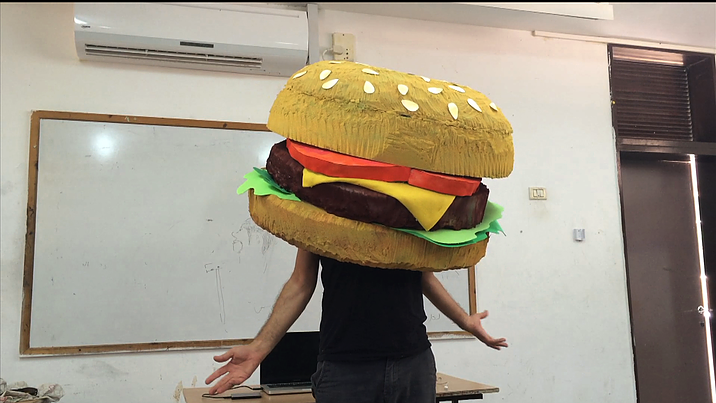
Guy Ben Ner, Still from Escape Artists (2016). Courtesy of the Artist and Sommer Contemporary Art, Tel Aviv
Fusing clips from these movies with the artist’s own shots and footage created by the students—several of which have been released by now—the 38-minute video work addresses its own trickery, needed to provide answers to the conditions and challenges of its own making, for example continuity.
Imbued with Ben Ner’s acerbic humor and poignant, if simple, editing stunts, Escape Artists, as the title reveals, is a tribute to the asylum seekers, who crossed several borders on foot on their way from East Africa through the Sinai Desert and into Israel.
“Guy Ben Ner, Escape Artists,” is on view at Sommer Contemporary from December 15, 2016 – March 4, 2017
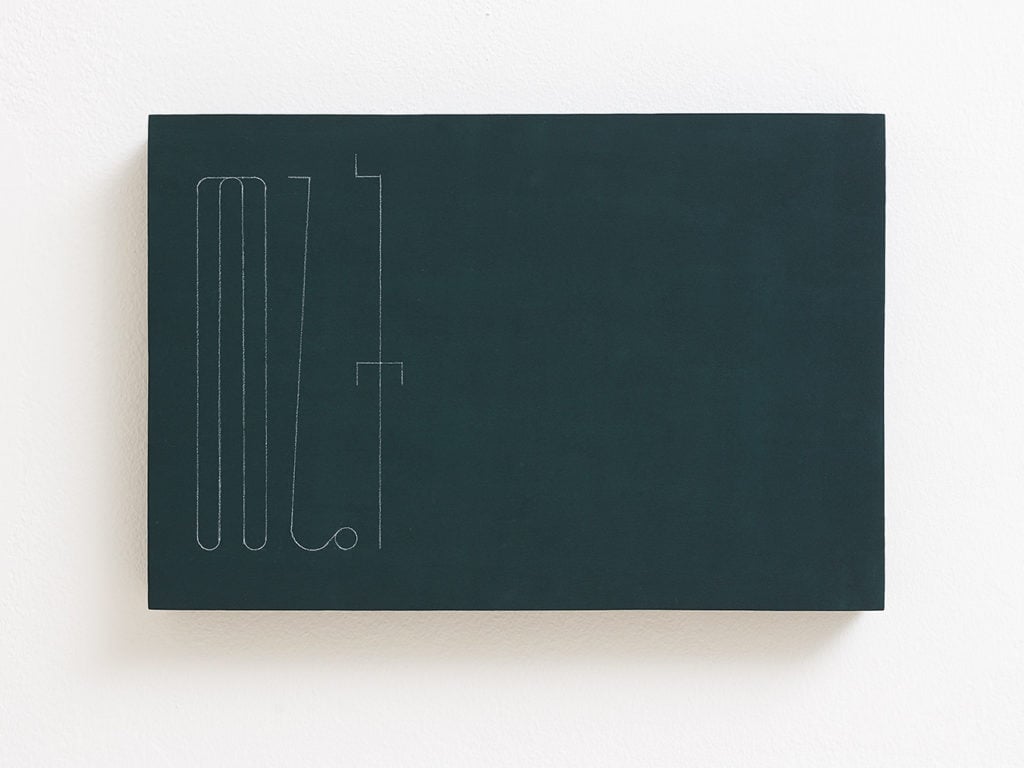
Florian Pumhösl, fidäl study (My land), (2016). Courtesy Dvir Gallery, Tel Aviv
3. Florian Pumhösl, “Formed Speech,” at Dvir Gallery, Tel Aviv
For his first solo exhibition with Dvir Gallery, Austrian artist Florian Pumhösl created a two-part series of sculptural works, shown on two separate floors in the gallery’s spacious south Tel Aviv location.
Currently on view is only one part of the show “Formed Speech,” which features six plaster paintings evocative of chalk writings on a school blackboard. The fine white-grey figures set against a dark green background are words written in the Ge’ez script, or fidäl, used in modern Amharic and Tiringya, languages spoken by the east African refugees.
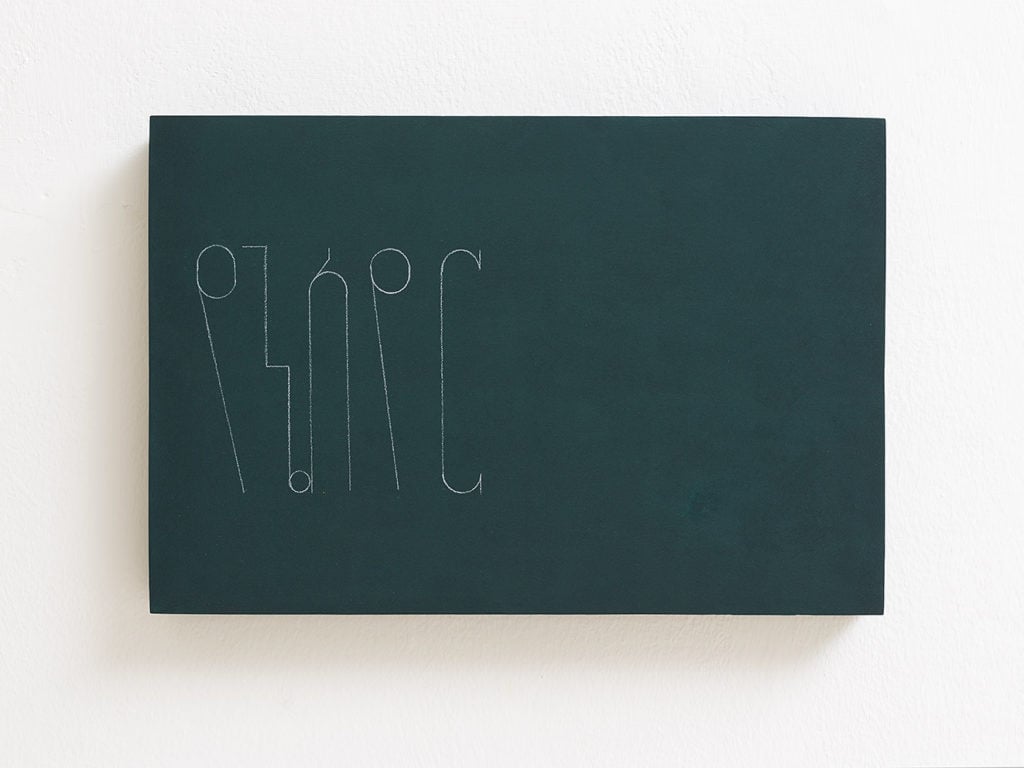
Florian Pumhösl, fidäl study (My air), (2016). Courtesy Dvir Gallery, Tel Aviv
But what starts as legible sentences that spell out “My land,” “My water,” “My air,” or “My horse” gradually disintegrates in the sequence of works into isolated phonemes, signifying less and less as each piece deconstructs the markings even further, until they are entirely de-familiarized.
With the gallery located just a stone’s throw away from the city’s central station, around which large communities of refugees live, the paintings’ muted aesthetics contrast the loud signs that hang on the busy streets and alleys around the station advertising businesses, social events, international calling cards, and internet cafés. It’s this visibility, in part, that has worsened the refugees’ status in Israel, with the government even being accused of having created this density as a strategy, keeping the disenfranchised within already weak neighborhoods plagued by poverty, crime, and unemployment. The Holot facility may not have been created if it weren’t for the political gain to be made from responding to the xenophobia this has caused.
Florian Pumhösl, “Formed Speech” is on view at Dvir Gallery.